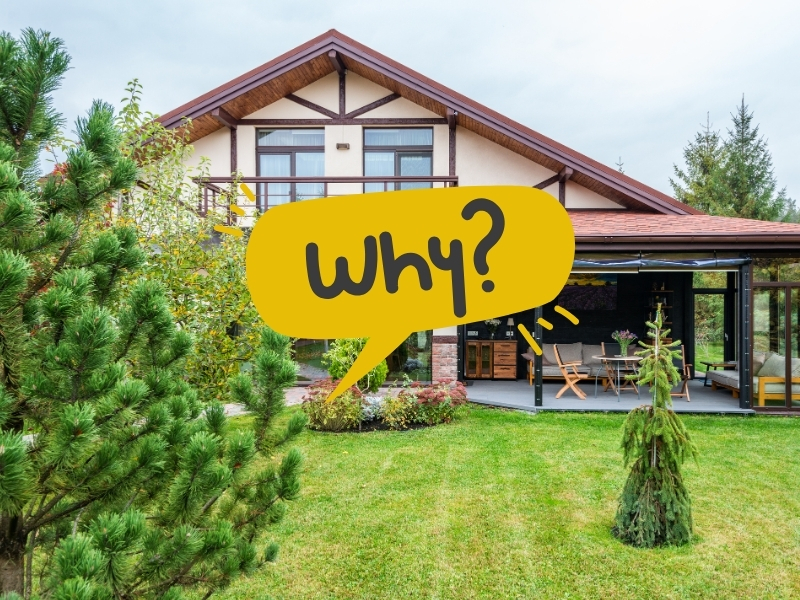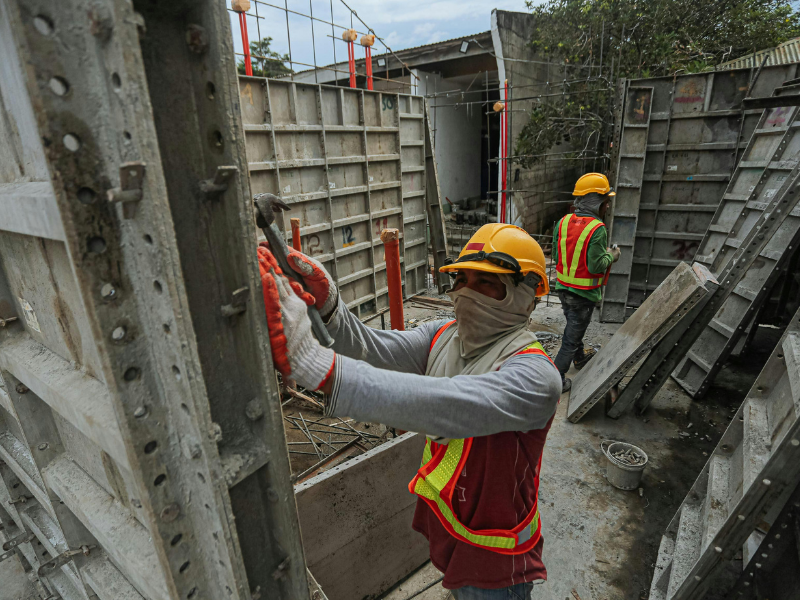How to Design a Climate-Resilient Home in the Philippines

Climate change isn’t just a global issue—it’s a personal one, too. And here in the Philippines, we feel its impact more than most. From stronger typhoons to rising floods, our homes face serious risks every year.
Now more than ever, Filipino families need to think long-term. Building a climate-resilient house isn’t just smart—it’s necessary. It protects your loved ones and your investment.
In this article, we’ll walk you through what a climate-resilient home is, why it matters, and the key features to consider. At Pencil Design Studio, we help families build safer, stronger homes built for the future.

What is a Climate-Resilient House?
A climate-resilient house is designed to withstand the changing environment—from stronger typhoons to extreme heat and flooding. Unlike traditional homes that may prioritize cost or aesthetics alone, resilient homes are built to adapt, protect, and endure.
They use smart design, durable materials, and systems that respond to natural hazards. In the Philippines, where disasters are common and unpredictable, these homes offer more than safety—they offer peace of mind.
It’s not just about surviving the next storm. It’s about creating a home that stays strong for the years—and generations—to come.

Why Building Resilience Matters?
Building a home is one thing—but building a home that lasts is another. As climate change worsens, Filipino families face growing risks that demand stronger, smarter design.
Here are some climate challenges we face today:
- Flooding and Typhoons: Every year, thousands of homes are damaged or destroyed due to severe weather.
- Earthquakes: Our country lies on the Pacific Ring of Fire, making structural safety non-negotiable.
- Rising Temperatures and Heatwaves: Homes must now be designed to keep cool—without relying solely on electricity.
- Water Supply Issues: Resilient homes consider water collection and conservation as part of daily life.

7 Essential Features of Resilient Homes
These key features make a home stronger, safer, and ready for the future—especially in a climate like the Philippines.

1. Typhoon-Proof Roof and Walls
When a typhoon hits, the roof and walls are the first line of defense—and the first to fail if not designed right. This feature addresses high winds, flying debris, and heavy rain, which are all common during Philippine typhoon season.
Roofs are especially vulnerable because they bear the brunt of wind uplift. Poor materials or weak fastening can lead to total roof loss. Walls, too, can collapse if they aren’t properly reinforced.
To build stronger homes, use sloped roofs with wind-resistant materials like long-span GI sheets, securely fastened with roof fasteners. Reinforce walls with concrete hollow blocks (CHB) filled with rebar and properly cured mortar.
During maintenance, inspect for loose fasteners, cracked walls, and rusted joints—especially before the rainy season. Keeping gutters clean also helps reduce pressure buildup from trapped water.
A typhoon-proof shell isn’t just a feature—it’s a necessity to protect everything and everyone inside your home.

2. Flood-Adapted Design and Drainage
Flooding is one of the most common and damaging climate threats in the Philippines. This feature addresses heavy rainfall, poor drainage systems, and rising water levels that often leave homes submerged and families displaced.
Traditional homes built at ground level are especially vulnerable. Water easily seeps in, damaging floors, walls, appliances, and personal belongings. Worse, stagnant water can lead to health risks like mold and mosquito-borne diseases.
To reduce flood impact, consider raising your home on stilts or a concrete platform. Install drainage canals or French drains around the property to redirect water away from the foundation. Use water-resistant materials for walls and floors, such as concrete, tiles, or waterproof coatings.
For maintenance, clean your drains and gutters regularly, especially before the rainy season. Check for any cracks or blockages in drainage lines and patch them immediately.
A flood-adapted design helps protect your home, your health, and your peace of mind.

3. Earthquake-Ready Structural System
The Philippines is located along the Pacific Ring of Fire, making earthquakes a constant threat. This feature addresses ground shaking and structural instability, which can cause homes to crack, tilt, or completely collapse.
Many traditional homes are not reinforced well enough to withstand seismic activity. Poor column and beam connections, lack of rebar, and substandard materials increase the risk of major damage or injury.
A climate-resilient home should be designed with an earthquake-resistant frame—typically reinforced concrete with properly spaced steel rebars. Use a strong foundation, such as a slab-on-grade or footing design, and avoid heavy overhangs or unsupported walls. Make sure all beams, columns, and walls are properly tied together.
For maintenance, check for hairline cracks or structural shifts after every tremor. Have a professional inspect your home regularly, especially in high-risk zones.
A well-designed structural system won’t just stand firm—it could save lives when the ground moves.

4. Energy-Saving House Features
With rising temperatures and frequent power outages, energy-saving features are more important than ever. This part of your home addresses heat buildup, electricity overuse, and cooling costs—especially during hot dry seasons in the Philippines.
Traditional homes often rely too much on electric fans and air conditioning. But when power is out or bills go up, these solutions fall short. That’s why a resilient home should include passive cooling strategies.
Design your home with large, opposite-facing windows for cross-ventilation. Use wide eaves, vent blocks, or insulated roofing to reduce indoor heat. Choose light-colored roofs and walls to reflect sunlight. Incorporate plants or vertical gardens to cool surrounding air naturally.
To maintain efficiency, keep vents and windows clean and unblocked. Check insulation and seal any air leaks. Upgrade to energy-efficient appliances where possible.
These features not only reduce your electric bill—they also keep your home comfortable and livable, no matter the weather.

5. Backup Power and Supplies
Power interruptions are common during storms, earthquakes, or extreme heatwaves. This feature addresses electricity outages and basic resource shortages—ensuring your home can function even when the grid goes down.
Traditional homes often rely solely on the main power and water lines. When those fail, families are left in the dark—literally and figuratively. A resilient home is equipped to stay operational in emergencies.
Install a backup power source, such as a solar panel system with battery storage or a portable generator. Set up a rainwater collection system with filters, and keep a dedicated pantry for non-perishable food. Secure a first-aid kit, flashlights, and battery-powered radios in one accessible spot.
Maintain your backup systems by checking battery life, rotating food supplies, and cleaning water tanks regularly. Test your generator or solar system at least once a month.
Being prepared means you don’t just survive emergencies—you stay safe, calm, and in control.

6. Emergency Shelter at Home
When disaster strikes, having a secure space within your home can be life-saving. This feature addresses personal safety during extreme weather events or emergencies when evacuation isn’t possible.
Many Filipino homes don’t have a designated safe area. Families often take shelter in rooms not built to withstand high winds, flying debris, or structural failure—putting lives at risk.
A resilient home includes a reinforced emergency room or panic space—ideally on the ground floor, away from windows, with concrete or masonry walls. This space should be stocked with emergency supplies, like drinking water, dry food, flashlights, a radio, and a first-aid kit.
To maintain it, check the room regularly for leaks, cracks, and mold. Update supplies every few months to make sure everything is usable when needed.
This small but critical space gives your family a fighting chance during the worst moments—when every second, and every wall, counts.

7. Budget-Friendly Resilient Design
Building a climate-resilient home doesn’t have to break the bank. This feature addresses the common concern that resilience is expensive—proving that smart design and material choices can protect your home without overspending.
Many homeowners settle for basic construction to save on costs, but that often leads to more repairs and expenses later. A budget-friendly resilient home focuses on long-term value over short-term savings.
Use locally available materials like properly cured concrete, CHBs, and steel for key structural elements. Incorporate simple passive cooling, like wide windows and shaded areas, to reduce electricity use. Plan your layout to avoid wasteful extensions or costly renovations down the line.
For maintenance, regular checkups on roofing, walls, and drainage will prevent expensive damage. Prioritize repairs before they get worse.
With the right planning and guidance, even a modest budget can build a home that’s strong, smart, and ready for anything.
Conclusion
Climate change is no longer a distant threat—it’s happening now, and our homes must be ready. From typhoon-proof roofs to energy-saving features, building a climate-resilient house means protecting your family, your investment, and your peace of mind
The good news? Resilience can be built into any home—with the right planning, smart design, and practical features.
Now is the time to think long-term and build a home that’s ready for anything.
At Pencil Design Studio, we help Filipino families design and build homes that last. Talk to us today and let’s bring your dream resilient home to life.
More Great Resources For You
More Great Resources For You
Let’s build your dream home now, shall we?
We guarantee you that we won’t rest until your dream home has come to life.



.png)
